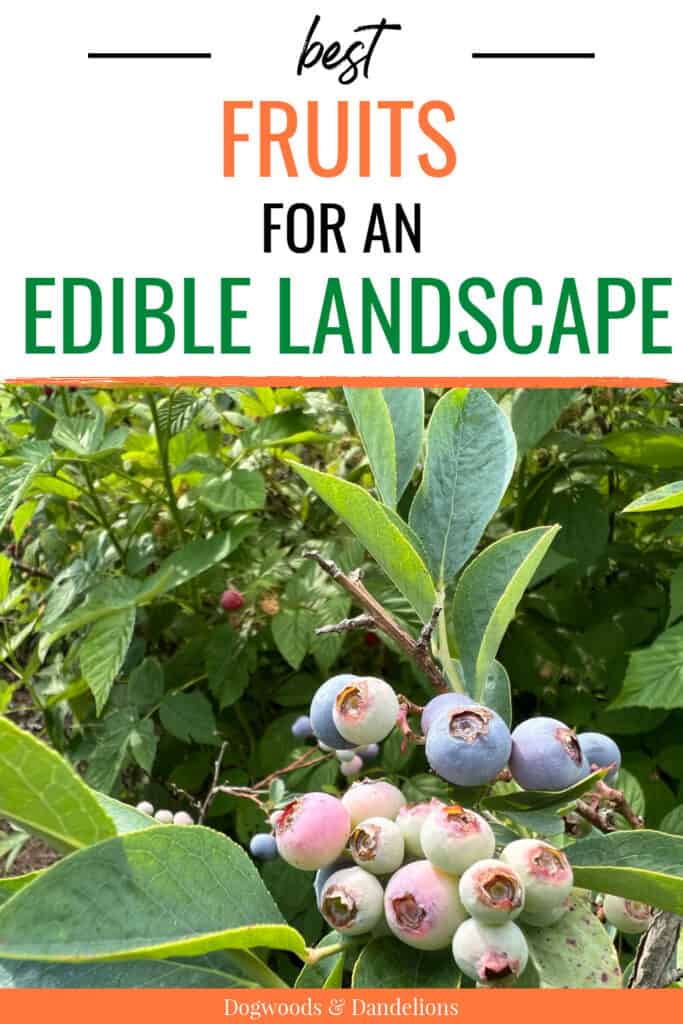Best Fruits for an Edible Landscape
When most people think of landscaping, they think of greenery, flowers, and maybe a few bushes. But what about fruit trees and other plants that bear fruit?
Adding fruit plants and trees to your landscaping is a great way to add variety to your yard while also providing healthy food for you and your family.
There are many different fruits that can be grown in a landscape setting, so you can choose the ones that best fit your tastes and needs. This post shares some of the best fruits for an edible landscape.
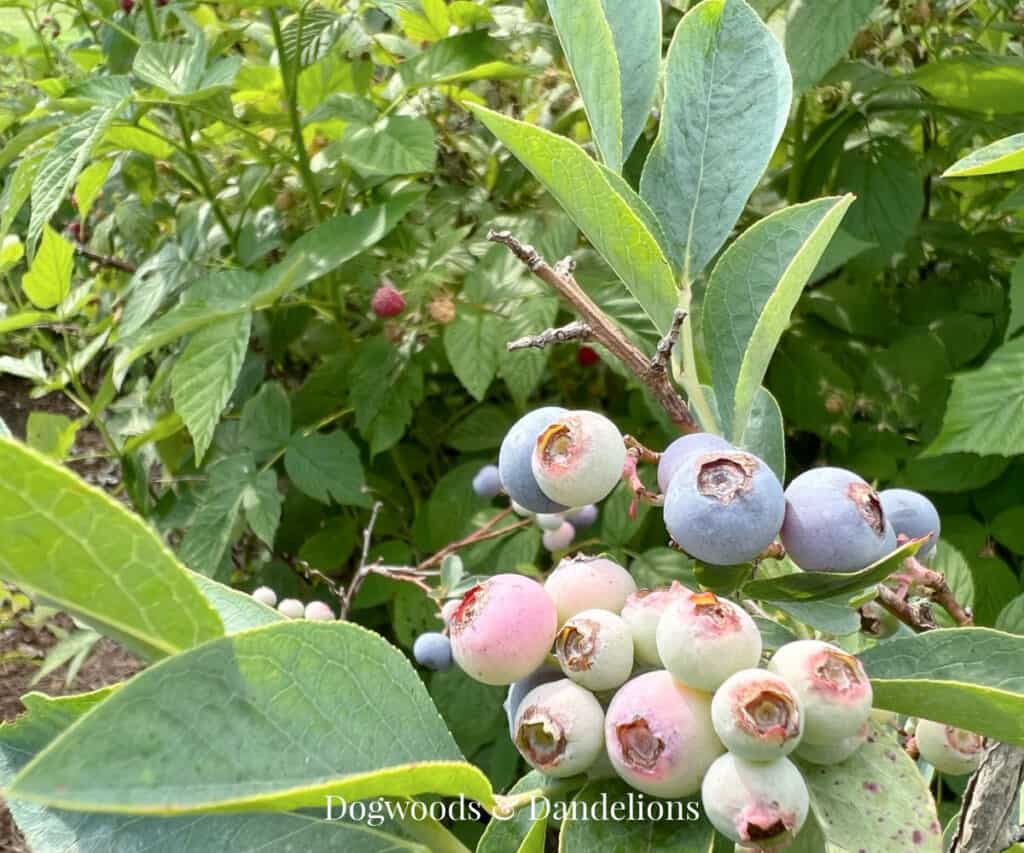
Affiliate Disclosure: Please note that some of the links in this article may be affiliate links and I may receive a small commission if you purchase something through a link. It will not change your cost. As an Amazon Associate, I earn from qualifying purchases. For more information, see my disclosures page.)
What is an Edible Landscape?
An edible landscape is a garden that features plants that can be eaten, providing both beauty and sustenance. While an edible landscape can take on many different forms, there are some basic elements that all edible landscapes share.
Most edible landscapes contain both ornamental plants as well as edible plants. Many also contain edible flowers. Edible landscapes are perfect for people with small yards or who only have a small space to add a few fruits and vegetables.
One of the most important things to consider when designing an edible landscape is the climate where you live.
In cold climates, it’s important to include plants that will thrive in the winter months. Conversely, in hot climates it’s important to include plants that will provide shade and cooling relief.
In addition to climate considerations, you also need to think about the layout of your garden and landscape design. If you have a small yard, you may want to consider installing a raised bed or using containers for your plants.
Growing plants in existing beds and flower gardens allows you to make the most of the space you already have, without digging up your yard to grow fruit. With little effort, you can be growing your own food, in your own yard, in a matter of days.

Benefits to Edible Landscaping
There are many benefits to edible landscaping. The first and most obvious benefit is that you can save money on groceries.
By planting vegetables and fruits in your yard, you can easily access them whenever you need them, without having to go to the grocery store. Saving money on groceries is another good reason to plant your own fruits and vegetables in your yard.
Another benefit of edible landscaping is that it is a great way to get exercise. Instead of just walking from your house to your car, you can walk through your garden to get to the vegetables and fruits you need.
Edible landscaping is also a great way to teach children about where food comes from. They can see for themselves how vegetables and fruits grow, and they can learn about the different types of plants that are used for food.
Learn more: Adding Vegetables to Your Edible Landscape
Adding Berry Bushes to Your Landscape
Berries are usually the first fruits people think about when they think about the best fruits for an edible landscape. And this is a good thought. Most berry plants or shrubs can be easily added to the landscape and many will produce food for years to come.
Strawberries
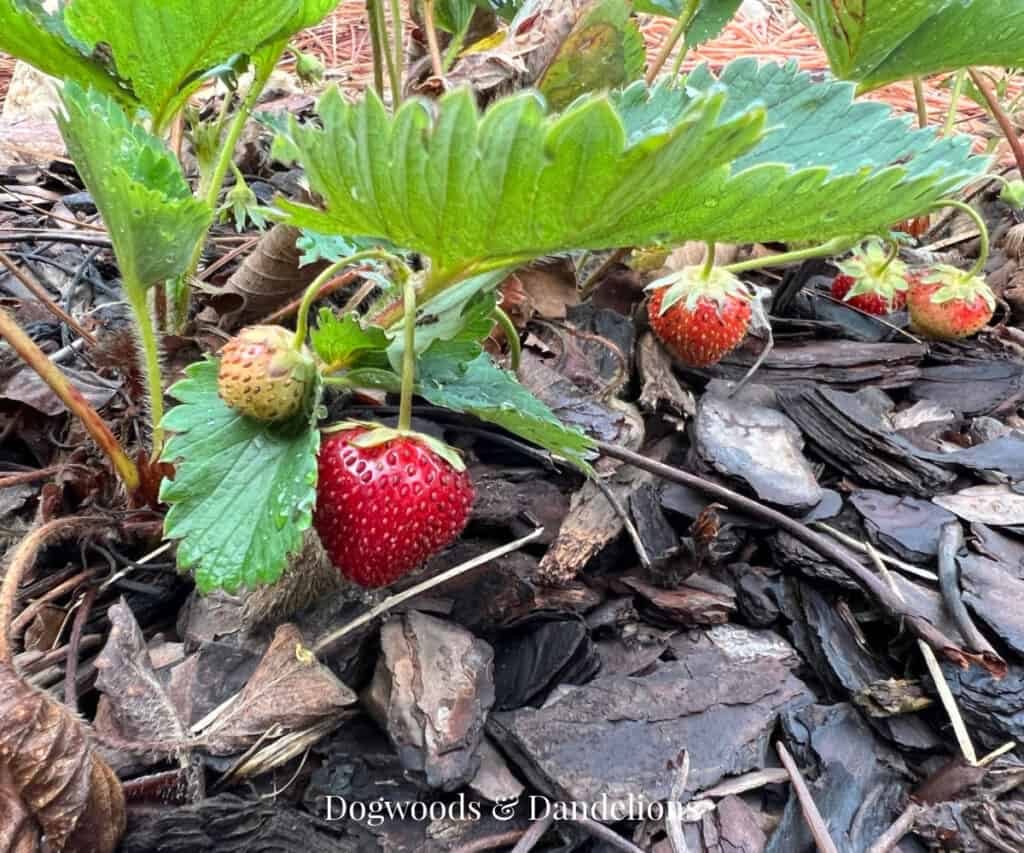
Strawberries are a great addition to any edible landscape. They are easy to grow and can be used in a variety of ways. In addition to eating them fresh, you can use strawberries in recipes, preserves, and even wine.
Strawberry plants make a beautiful border to the front of a shrub or flower bed. Their pretty white flowers in the spring are soon followed by delicious red berries a short while later.
And I have never tasted a single strawberry as delicious as one I have grown. A warm, sun-ripened strawberry plucked from the vine is one of the most delightful things you will ever eat.
Read more: How to Grow Strawberries
Blueberries
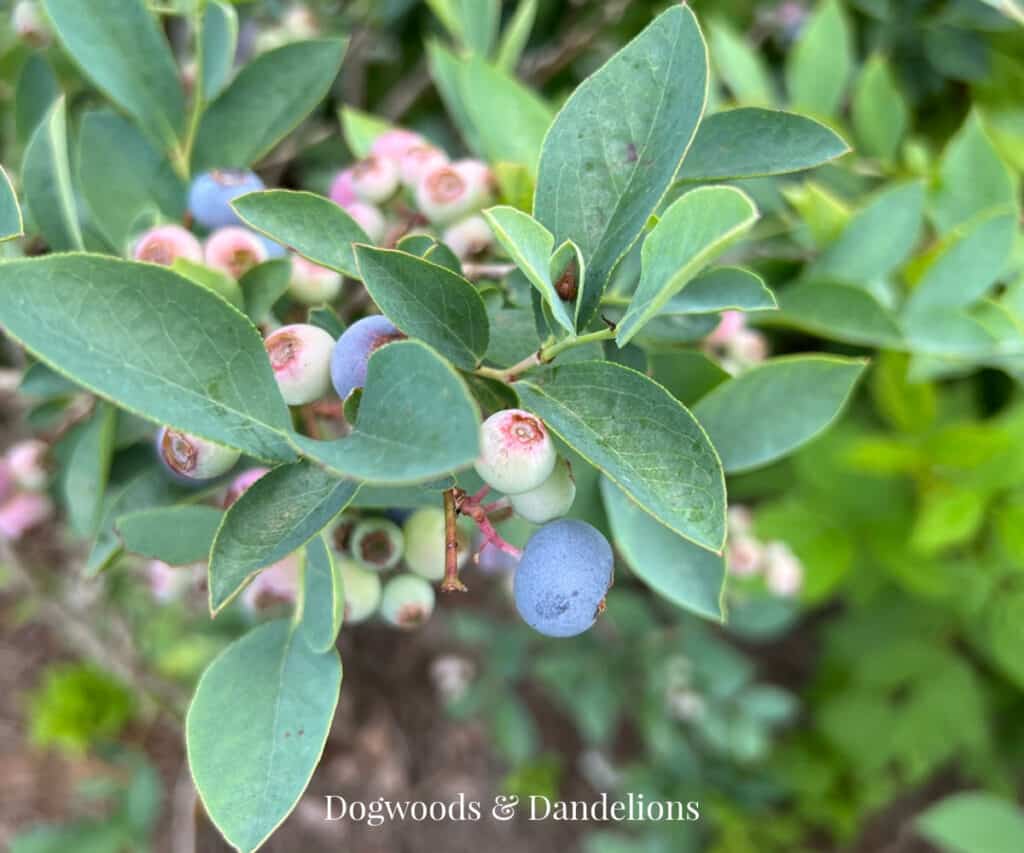
Most people think of the blueberry as a small, tart fruit grown in northern states and Canada. While it is true that the wild blueberry is a small fruit, there are also large-fruited varieties that can be grown in the edible landscape.
The large-fruited blueberries are not only tasty but also beautiful, with a deep purple color. In addition to being eaten fresh, blueberries can also be used in jams, pies, smoothies, and other recipes.
Blueberries are easy to grow in the home garden or landscape. They are a hardy plant that can tolerate a variety of soil conditions, but prefer a soil with a pH of 4.5 to 5.5. They can be planted in early spring or late fall.
And blueberries provide three seasons of color. The plants have beautiful pinkish-white flowers in early spring. Followed by the blueberries themselves against a green background of leaves.
Then when the weather starts to turn cooler in the fall, the leaves change to a beautiful reddish hue that adds great interest to the edible landscape. Many people plant blueberry bushes for their colorful fall foliage alone.
Read more: How to Grow Blueberries
Raspberries
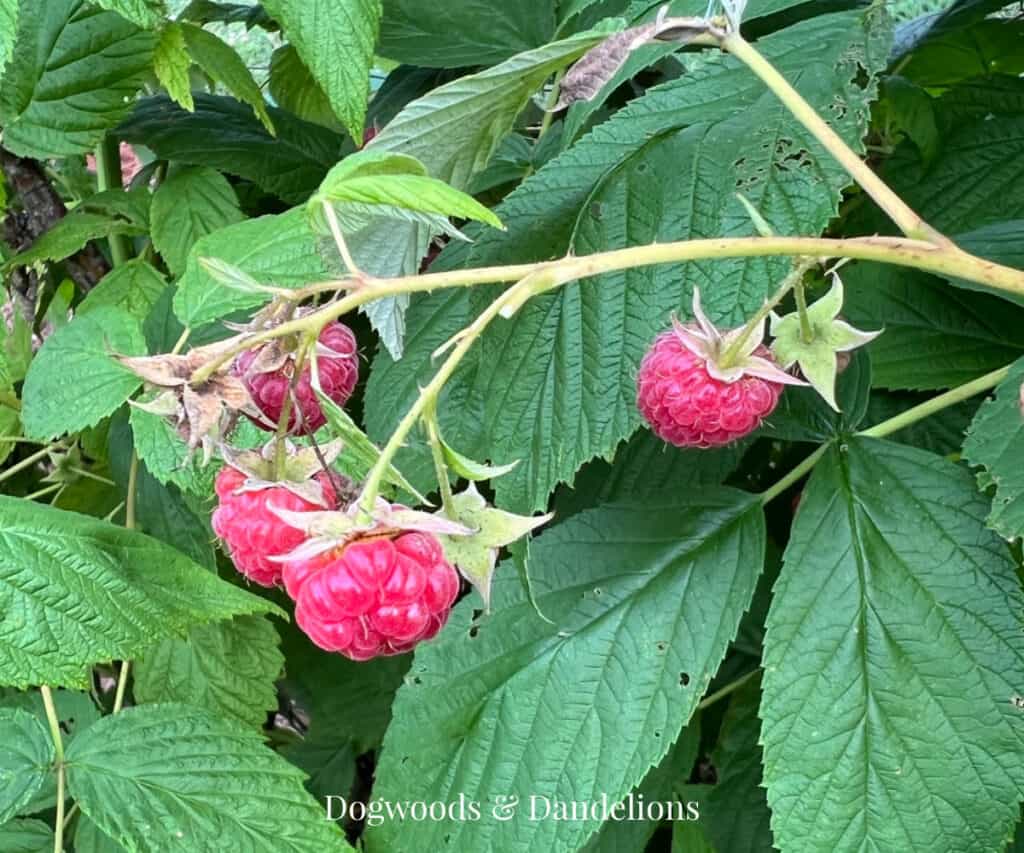
Raspberries are another berry that can do well in the landscape, but they do require a bit more maintenance than strawberries or blueberries.
Raspberries can be grown in many parts of the country, but they need a sunny spot with well-drained soil. The plants should be spaced 3 to 4 feet apart.
The raspberry canes will usually produce fruit the first year after planting, and the harvest will increase each year. The plants will continue to produce fruit for many years if they are properly cared for.
The plants can quickly overtake an area if they aren’t pruned regularly, but they can make a great hedge row between the neighbors or hide an unsightly fence.
Read more: How to Grow Raspberries
Trees to Grow in the Edible Landscape
Fruit trees provide many benefits to the landscape. They can add beauty and shade in the summer and fall, and they produce delicious fruit that can be eaten fresh or used in cooking.
Fruit trees also provide wildlife habitat, and they can be used to create a windbreak or privacy screen. Additionally, fruit trees help to improve soil quality by providing nutrients and organic matter.
A small tree can be a great focal point for a backyard flower bed or foodscape.
When planning an edible landscape, it’s important to choose fruit trees that will thrive in your climate and provide you with the types of fruit you love to eat. There are many different types of fruit trees to choose from, and each has its own unique set of benefits.
Apple Trees
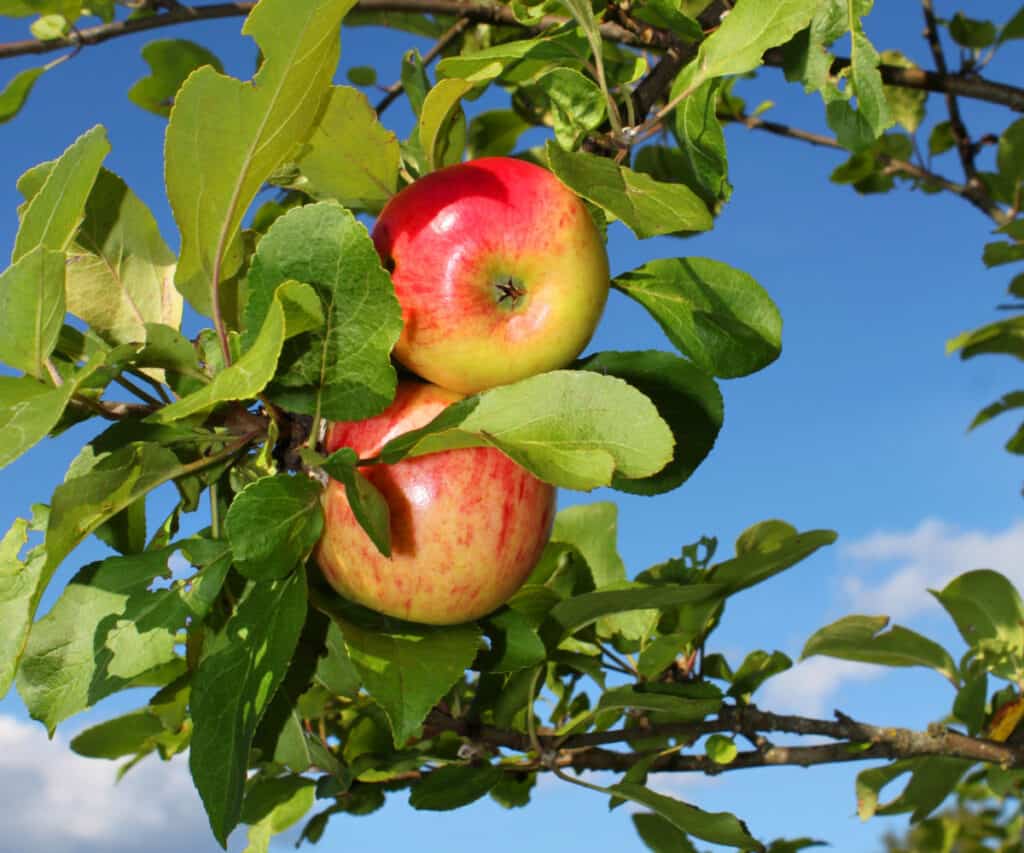
One of the most popular fruit trees to grow in the home landscape is the apple tree. Apple trees are a great choice for the edible landscape because they produce a bounty of delicious fruit that can be eaten fresh or used in cooking.
Apple trees are an especially good choice for colder climates, as they require cold winters to produce fruit. They also boast a long fruiting season, meaning you can enjoy apples from late summer through early winter.
Apple trees can also be trained to grow as espaliered trees, which not only provide fruit but is truly an art form in the garden or landscape.
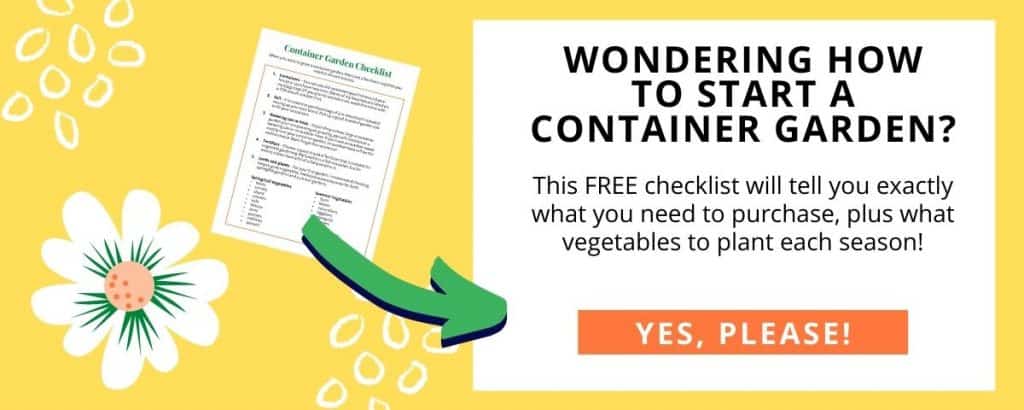
Plum Trees
Plum trees are another good choice for colder climates, as they are hardy and produce delicious plums in the late summer and early fall.
They are a great option for the edible landscape because they are relatively small, and they produce a lot of fruit. Plum trees are hardy in zones 4-8, so they can be grown in a wide range of climates. Plum trees are also relatively easy to care for, and they can be used to attract pollinators to the garden.
Fig Trees
In warmer climates, fig trees are a great option. There are many types of fig trees that can be grown in the home garden, and each has its own unique flavor and texture.
Fig trees are relatively easy to care for, and they are hardy plants that can tolerate a wide range of conditions. They don’t require a lot of water and produce delicious figs all summer long.
Figs can be eaten fresh or dried, and they make a delicious addition to baked goods, jams, and preserves.
Citrus Trees
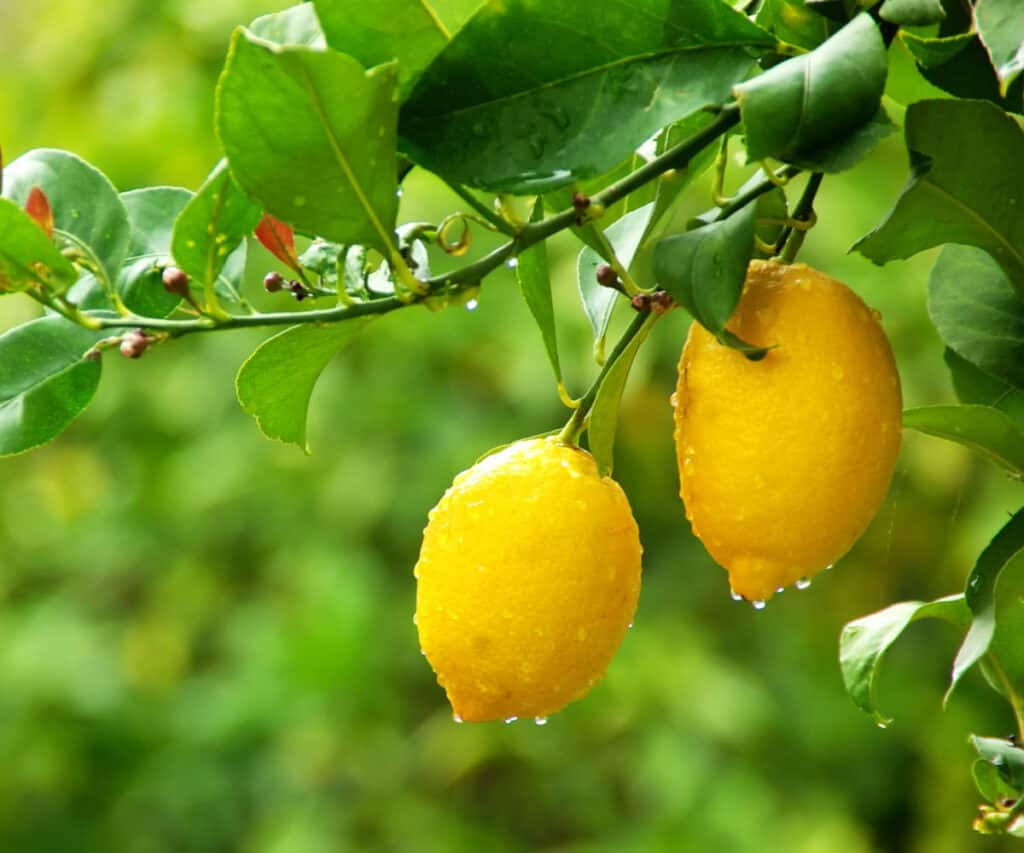
If you’re looking for a fruit tree that is both beautiful and productive, consider growing a citrus tree in your edible landscape.
Citrus trees are available in many different varieties, like lemons, limes, oranges, and grapefruits. However, most citrus trees are only suited for tropical and subtropical climates unless they are going to be grown indoors. Citrus trees are also drought-tolerant, so they don’t require a lot of water to thrive.
Pear Trees
There are a few things to consider when planting a pear tree in edible landscaping. First, make sure you have plenty of space. A mature pear tree can reach up to 25 feet tall and spread 20 feet wide.
Also, choose a spot with full sun and well-drained soil. Pear trees are not very tolerant of wet feet, so avoid planting them in low-lying areas or near drainage ditches. When preparing the soil, mix in some compost to help improve drainage and fertility.
Because pear trees grow so large, they may not be suitable for every landscape situation, especially near a house or building. However, pear trees can be used in other landscape settings to provide shade during the summer.
Peach Trees
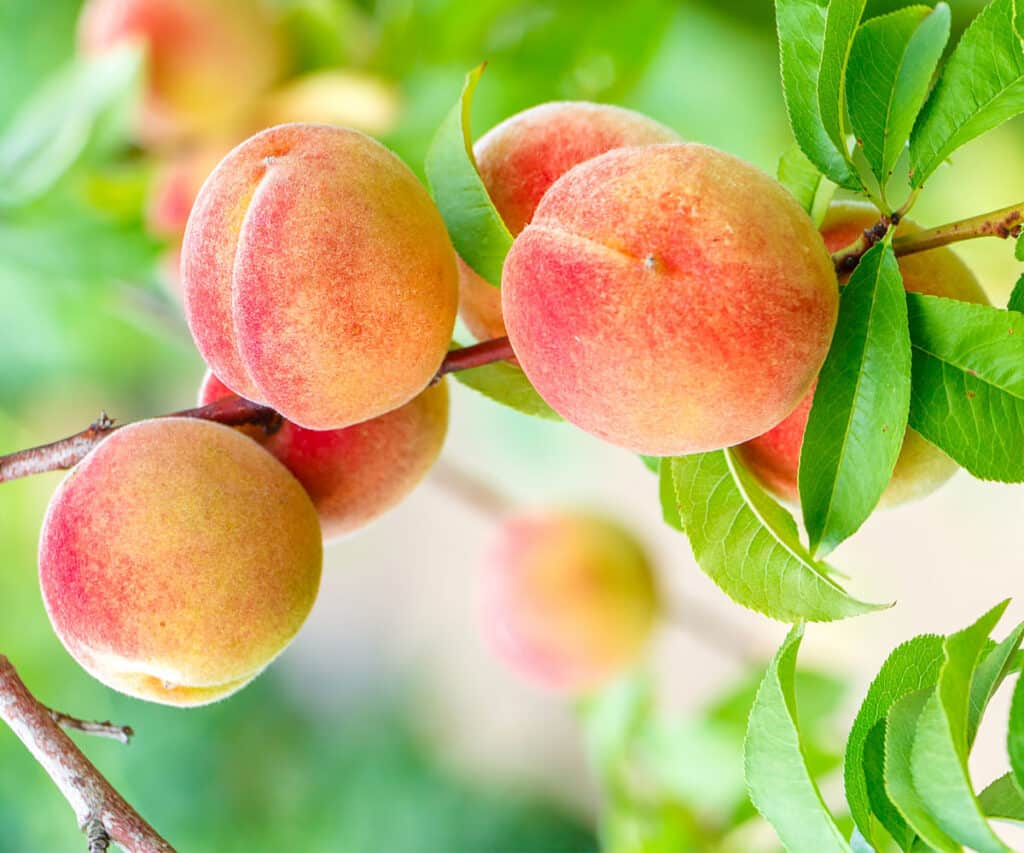
In the edible landscape, peach trees can be a lovely addition. They are hardy in zones 5-8 and can grow up to 25 feet tall. Peaches need full sun and well-drained soil. They are best planted in late winter or early spring.
Peach trees have beautiful white blooms in early spring that turn into delicious peaches in the summer.
Cherry Trees
The cherry tree is a beautiful addition to any landscape. It is hardy in zones 4-8 and grows up to 25 feet tall. There are many different types of cherry trees, including tart cherries, sweet cherries, and sour cherries.
Tart cherries are the most popular type for home gardens. They are small, dark red, and have a tart flavor.
However, there are other types of cherries suitable for landscape plantings. Sweet cherries are larger than tart cherries and have a sweet flavor. You have probably seen Bing and Ranier cherries for sale in your grocery store.
Sour cherries are smaller than sweet cherries and have a sour flavor. They are generally used for cooking in pies and cobblers where you want the cherry to hold its shape and not go mushy once cooked.
Cherry trees can be grown in the edible landscape by planting them in a sunny location with well-drained soil.
Other Fruits for an Edible Landscape
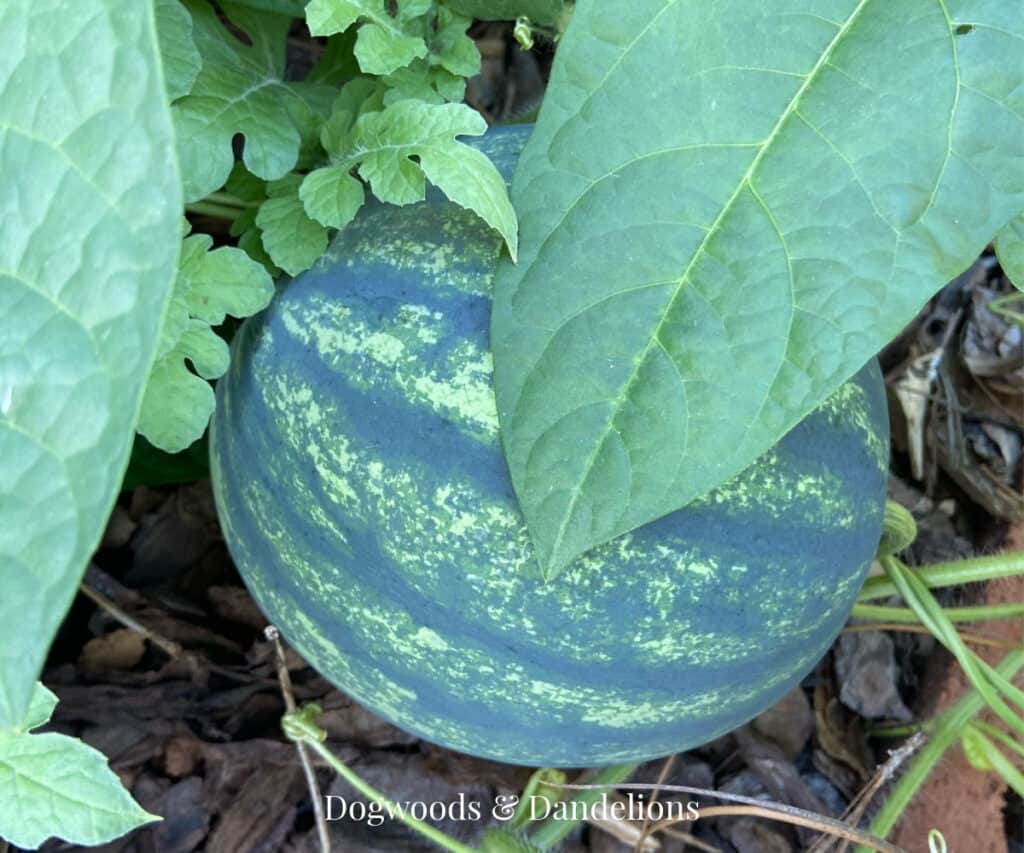
While watermelon, cantaloupe, and pumpkin may not be the first fruits you think of when designing an edible landscape, they can work well provided a few conditions are met.
First, since all three are vining plants, they need lots of room to grow. They are more suited to a backyard border than planted near a front door walkway.
All 3 are also annual plants, not perennials, so they will have to be replanted each year.
However, vining fruits can work well in the landscape setting. They are great to cover slopes but they can also be trained to grow up a trellis to add interest to a blank wall or fence.
Ways to Learn More About Edible Landscaping
If you want to learn even more about edible landscaping, I’ve got two books that I highly recommend.
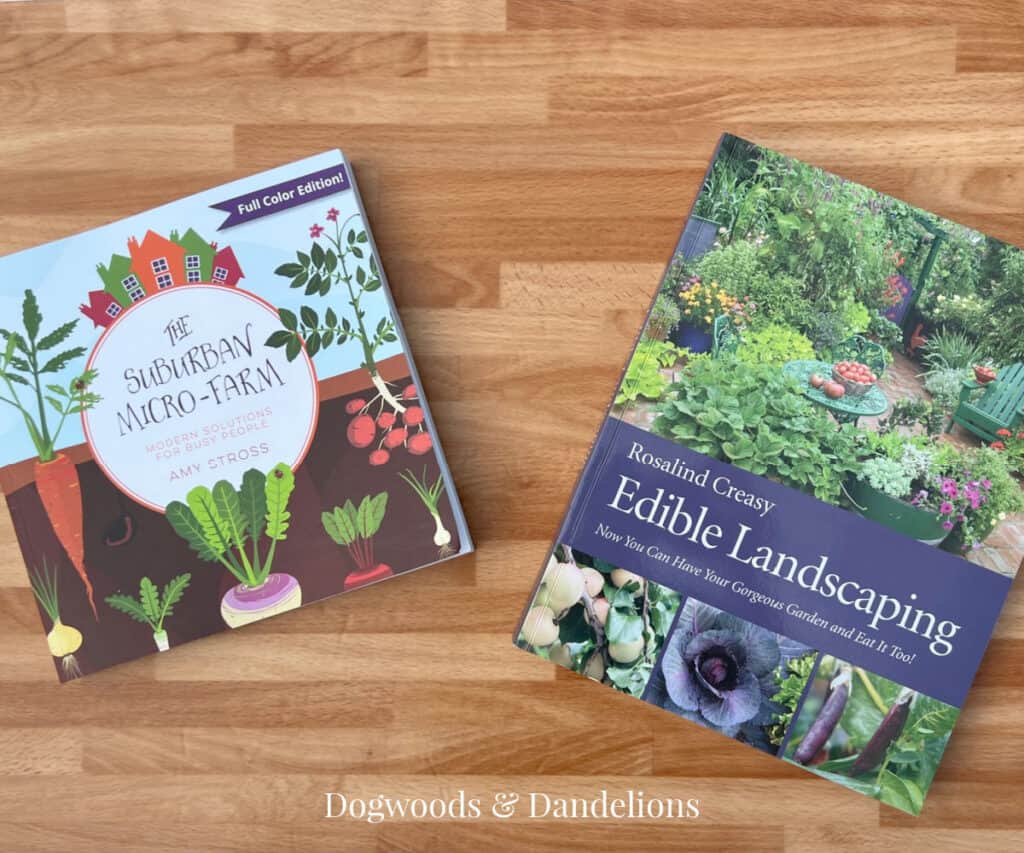
Edible Landscaping by Rosalind Creasy
First, Rosalind Creasy’s Edible Landscaping is filled with knowledge on how to grow almost anything in the edible landscape. She shares detailed descriptions of how to grow many different fruits in an edible garden.
From how to purchase plants, how to fertilize each fruit and vegetable, and even how to use what you harvest, this book leaves no stone unturned when it comes to growing food in the landscape. The book even covers how to grow many nut trees in small yards.
The Suburban Micro-Farm: Modern Solutions for Busy People
The Suburban Micro-Farm: Modern Solutions for Busy People by Amy Stross shares the secrets of growing food even in a suburban neighborhood. She shares tips and tricks to grow a variety of produce in a limited amount of time and space, using the yard that you have.
The Suburban Micro-Farm also shares deer and rabbit resistant plants and ways to protect other plants from being eaten by these furry critters.
You will be amazed at the amount of edible fruit you can grow in a small space. If you’ve never given edible landscaping a try, why not add a few fruits to your ornamental garden this year.
Related Posts
- Best Vegetables to Grow in the Edible Landscape
- How to Grow Heuchera (also known as Coral Bells)
- 10 Best Herbs for Beginning Gardeners to Grow
